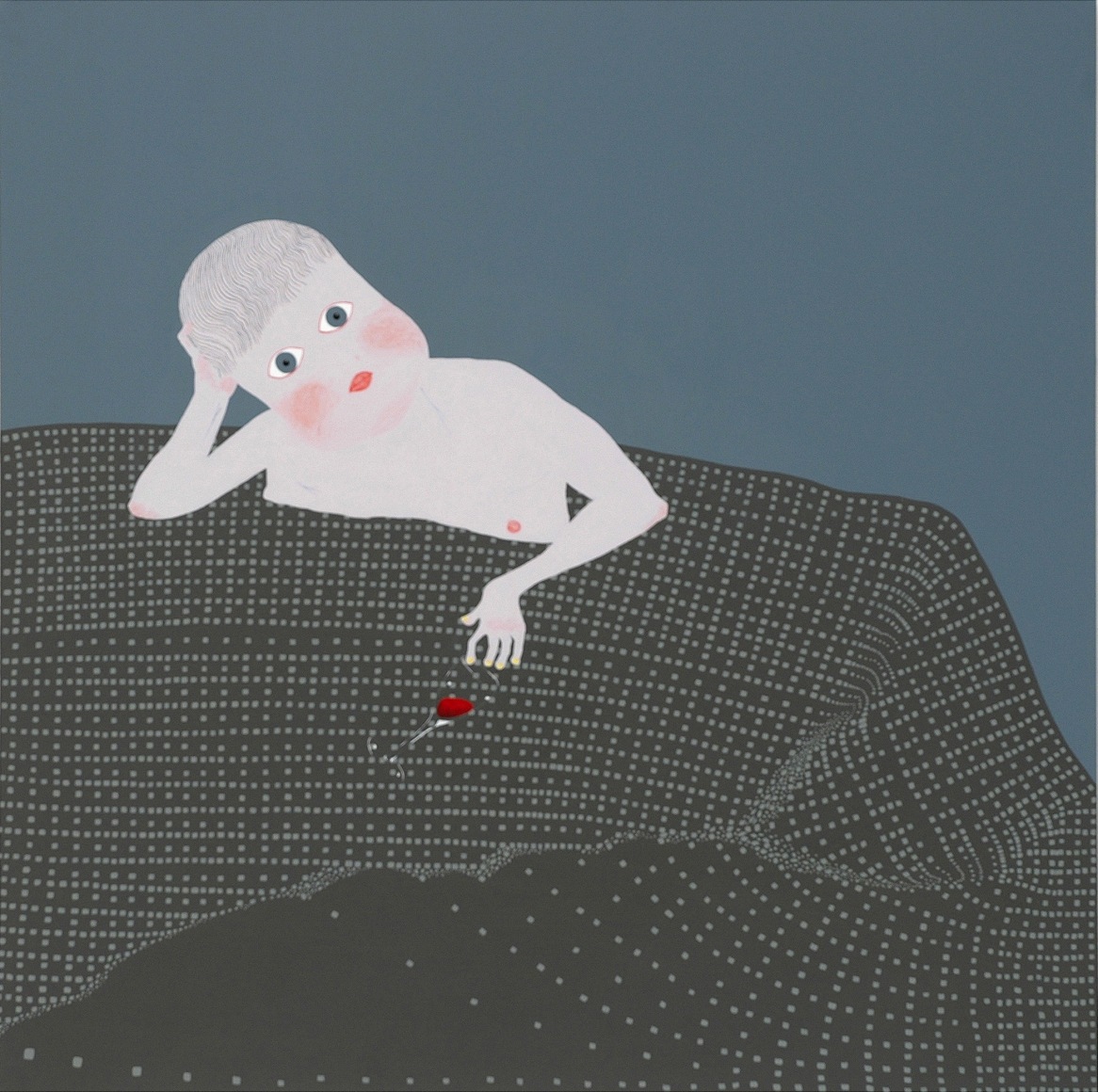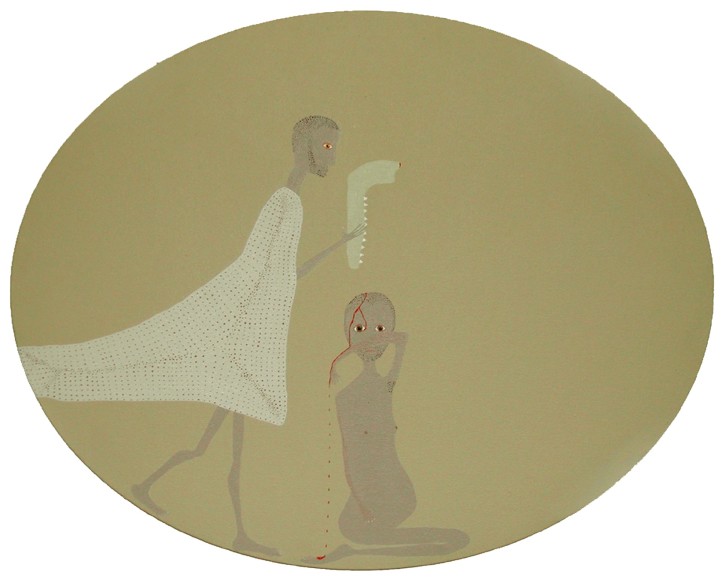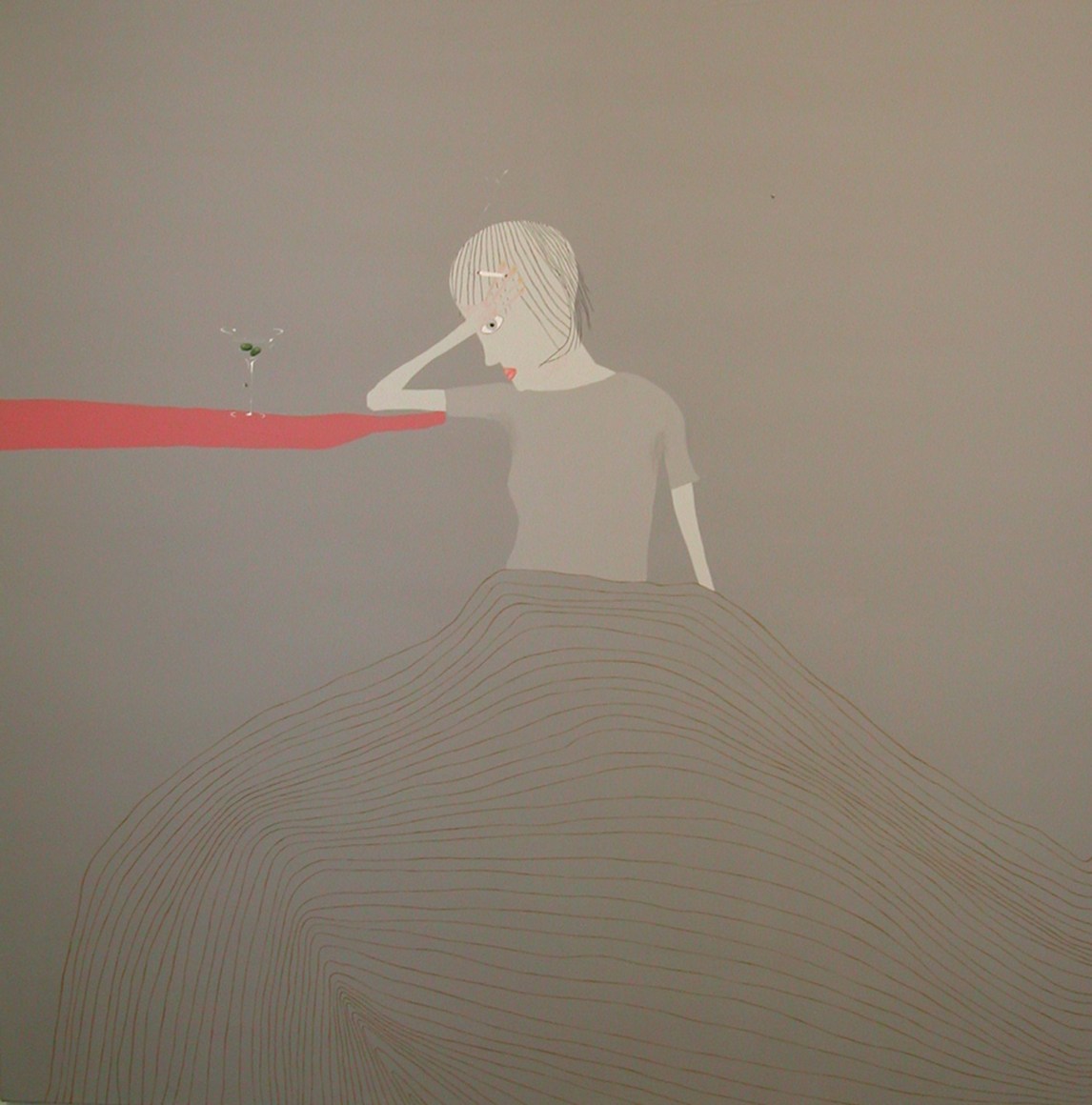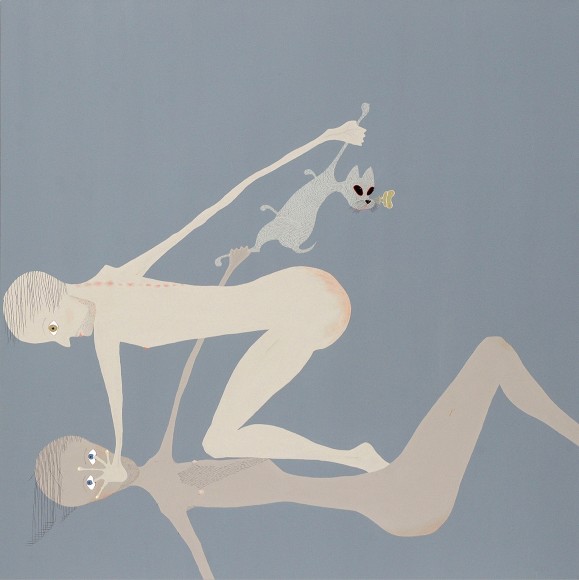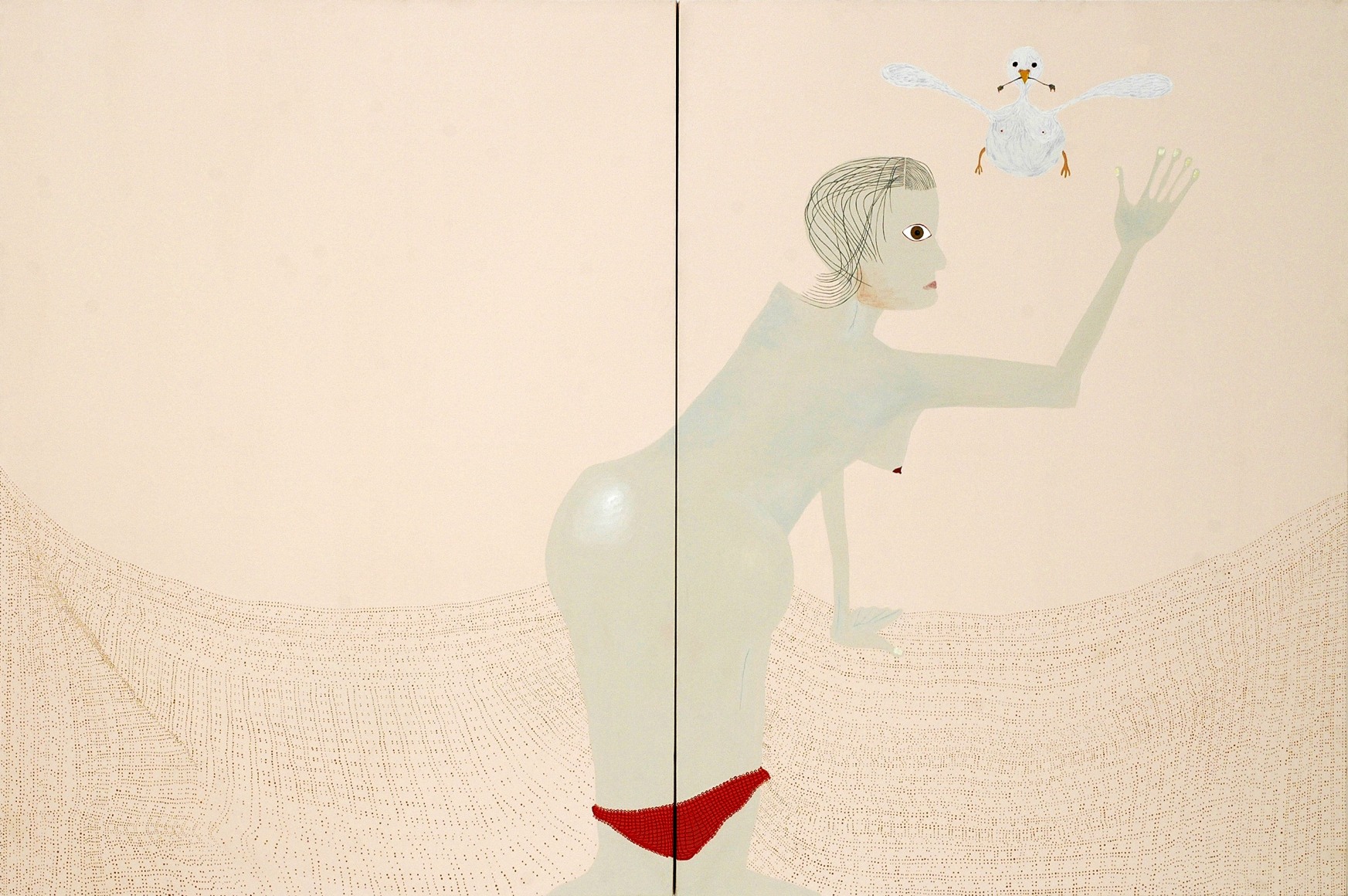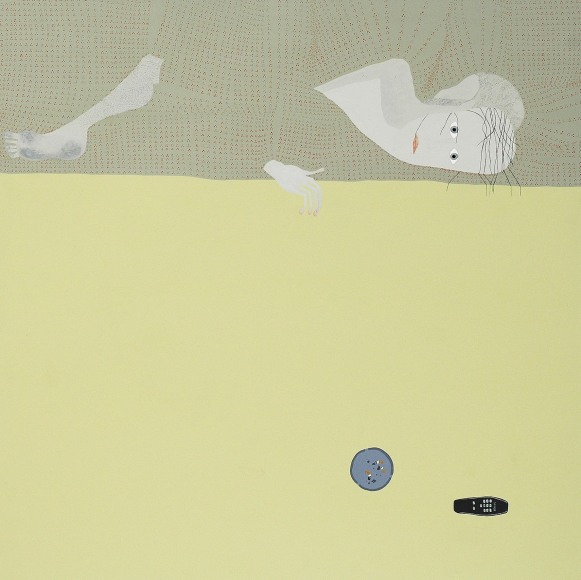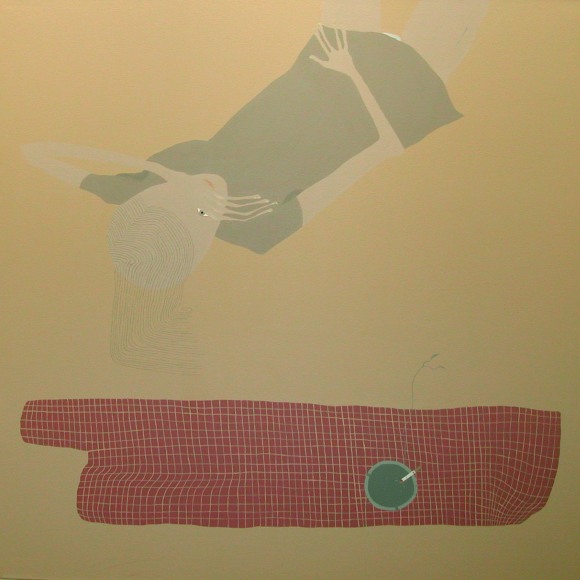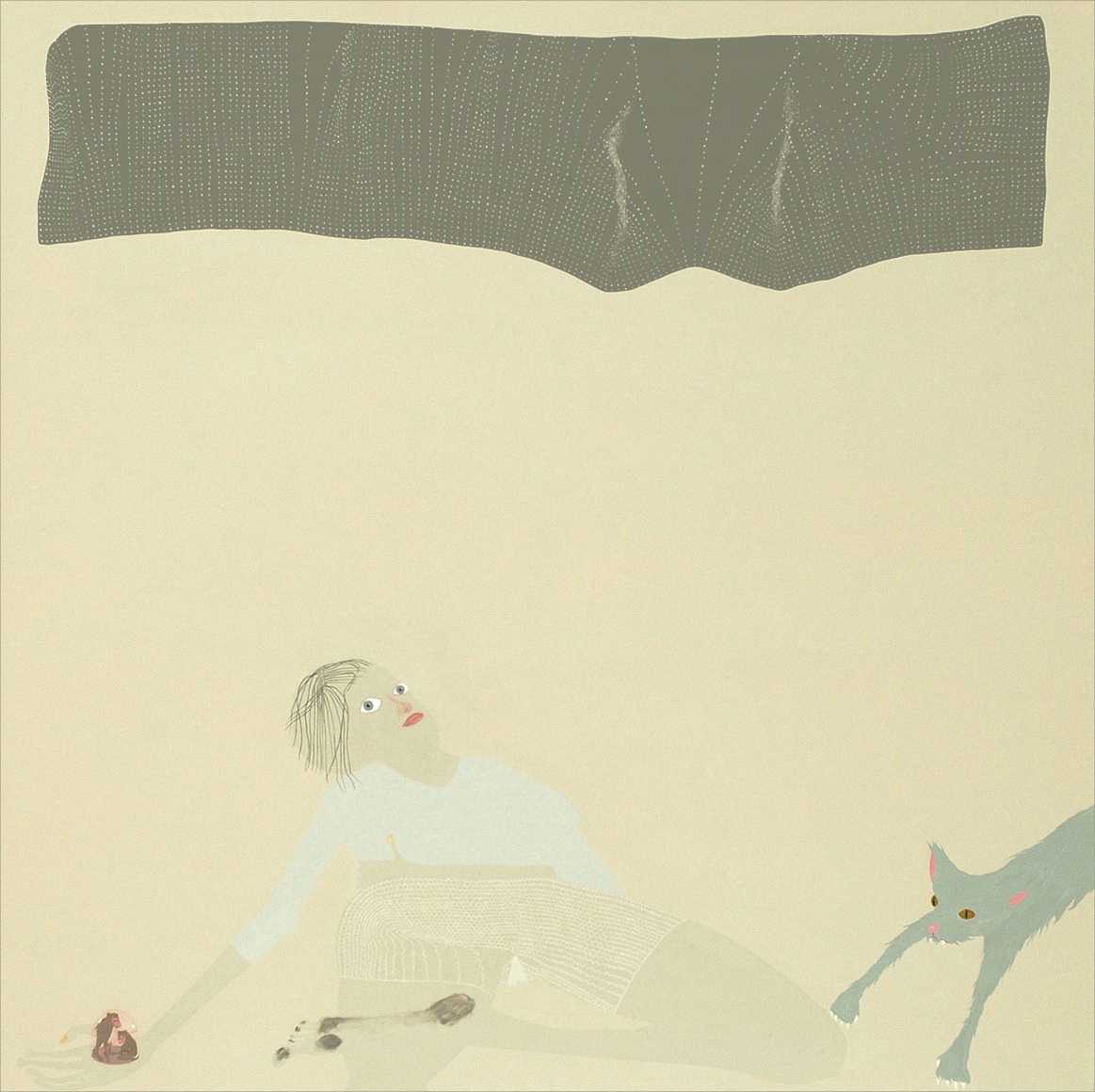In her painting Two Men Fighting Over a Thing That Makes Them Happy (2004)
Thordis Adalsteinsdottir introduces several new features into the subject matter of her
painting. First is the reference to Classicism or classical figuration, dating back to
Greek or Egyptian times. She prunes to the bare essence of two men in the midst of
battle, a common classical theme. Each of Adalsteinsdottir’s figures has archaic features,
but the body proportions are flattened and attenuated and yet the figure on the bottom,
rather than in an eyelock with his opponent, looks out at us with an expression that
seems to ask, “can you believe this is happening?” A poor little animal’s extremities are
being pulled in two directions, and this creature, the subject of the fight, seems to be the
real victim—the Helen of Troy in this battle scene. We as viewers can conclude that in
such fights there are no winners, only losers.
As a Psychoanalyst, it has been my experience that when a patient who has been severely
traumatized in life comes into my office, I am struck by a feeling that the story being told
to me has a quality of unreality like a fairy tale gone completely haywire and becoming a
nightmare. The more overt this experience of unreality is, the more I comprehend the
severity of the trauma that the person with me has experienced. When I stand in a room
with the paintings of Thordis Adalsteinsdottir, the sensation is similar. Her paintings are
the very essence of interior psychological space. The psychoanalyst R. D. Laing once
commented that when he looked at the paintings of Francis Bacon, he knew that Bacon
understood what it was like to be schizophrenic-- not being able to distinguish inside and
out. Clearly, Adalsteinsdottir understands Bacon as well, and she especially understands
how using monochromatic off-tones to fill the picture space lends intensity to
psychological tension. She also feeds that tension with bizarrely expressive and
sometimes atrophied figures that have become her signature. They often seem vulnerable
and youthful and one step removed from some unmentionable trauma.
Owen in the Bathtub (2004) at first appears to be an innocent interior scene—a figure in a
bathtub. The reddened knees and the razor sitting on the tub ledge push Adalsteinsdottir’s
image beyond anything Bonnard ever could have dreamed up. The opaque water makes
the boy seem disembodied, and the idiosyncratic tiling design around the edges adds to
the effect that something is askew. The hieratic profile with one almond-shaped eye
equates the figure with ancient art and suggests the timeless universal struggle of
mankind. If water symbolizes our emotional state of being, then the murky water pushes
the metaphor. Yet, in our contemporary world we may think more of this vulnerable
creature on the brink of shame, exhaustion, and perhaps self-destruction.
Adalsteinsdottir’s paintings seem to often call some aspect of the self into question. In the
diptych Woman and Bird with Ovaries (2004) she has created a narrative in which we are
not sure whether she is giving us the antithesis of an Annunciation or a reverant prayer.
A partially nude woman, red panties pulled below the hips, waves haplessly at an equally
hapless bird that is flying with ovaries in its claws. Is the bird arriving as bearer of a gift
or departing? Often birds are a symbol for the soul and for transformation, but now
Adalsteinsdottir seems to press the symbol, perhaps relegating the winged creature to a
thief. The vertical line that splits the image passes through the woman’s body, and no
matter which reading the viewer may bring to the painting, the diptych is a compelling
and painful reminder of the tenuousness of life.
-Douglas F. Maxwell

